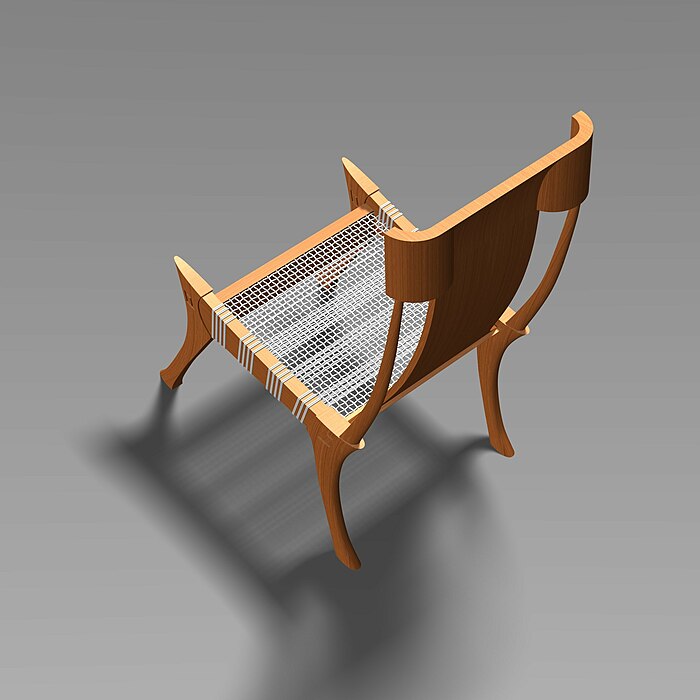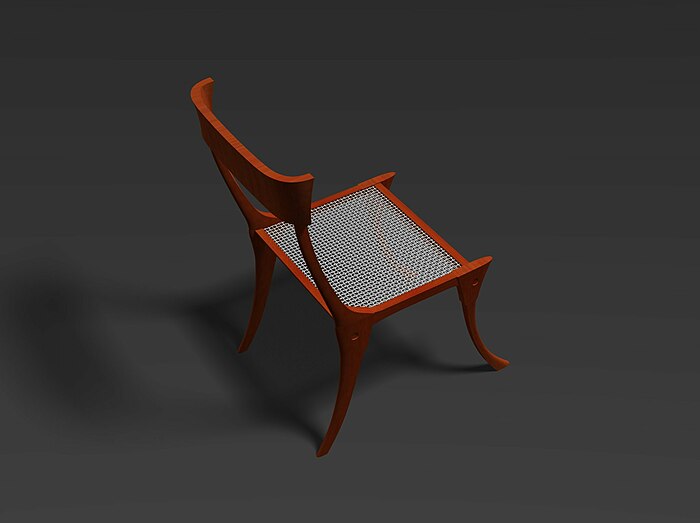Ancient Greek Chairs
The Ancient Greeks crafted furniture that had a character all its own. Like all aspects of their culture which was infused with drama and dynamism the design of chairs was no different. The chair makers of Ancient Greece were clever and imaginative. It is very fortunate that we have many depictions of their designs to look at. A lot of these can be found on their ceramics. There was some diversity in design with some of them looking pleasing even when seen as a two dimensional picture. As far as having a real example of furniture to look at, we are out of luck. Apparently there are some small fragments left in existence, none of which can be easily accessed. In general Ancient Greek chairs have the characteristic of having outward curved legs. The amount of material in the vicinity of the joints has expanded considerably from that of the lower reaches of the legs where they are much thinner. The major components of Ancient Greek chairs, such as the legs and the backrest posts are mostly quite curved a lot more so than what is seen in modern furniture. Dowels used to tighten the joints, are a visible feature of the design. The front and back rails does not rely on some sort of elaborate joint but is set in place by the forces generated when the seat cord is woven up.
CURVES The sweeping curves are a prominent feature of ancient Greek chairs. The curvatures of some of the components particularly of the legs are considerable. There is no easy way of achieving such curvatures in straight grained wood. It is essential that the grain runs along the length of the component especially the legs otherwise it will look wrong from an engineering point of view as well as being weak structurally. There are several ideas that the Ancient Greeks might have utilized. The most likely is that they used specially selected timber that was the right shape to start with. This could even mean using the trunk and branch of a tree to obtain the shape required. Some of their designs have dramatic curves as seen in a colorful interpretation of an Ancient Greek chair (picture 1). In another colorful interpretation of an Ancient Greek chair (picture 2) the top of the posts have been bent right around which indicates that steam or heat bending was used to create curves in timber. This would imply that the type of timber selected was amenable to bending. Another way of obtaining the desired timber is to grow a tree and manipulate the shape in which it grows. There is a method of growing timber at a faster than normal speed called coppicing. Trees are cut down but the sprouts that shoot up from the stump can grow quickly because the mature roots are still in place. Nonetheless it would still take years to grow the desired piece of timber using this method.
JOINTS The joints that holds the legs to the side rail are quite large .The unique style of ancient Greek chairs with it's rapidly expanding amounts of material in the legs culminating where the side rail meet the legs should be thought of being like that for structural reasons as much as aesthetic reasons. Once the general design came into being around 500 B.C. The design lasted for more than 100 years. The substantial sized joints allows ancient Greek chairs to be made without the use of glue. If glue was not used in their designs then that would explain the longevity of that design because the general design of the chair could not be changed for of structural reasons. The joint that holds the legs to the side rail could be described as a mortise and tenon drawn tight with a dowel or some variation of this joint. On examination of Ancient Greek ceramics with pictures of chairs on them, they usually have a figure sitting on the chair. The position of the figure's legs indicates where the front rail is placed and turns out that it is placed further back than might be expected. It would seem that the dowel is not part of the front rail and each front leg has it's own separate dowel.
STRINGING UP THE SEAT The side rail facing the viewer on ancient Greek ceramics with picture of chairs on them often has lines depicted on it. These lines represents the cord that has be wrapped around the outside of the side rail. To emulate what the Ancient Greeks might of done, an effective way was worked out to string up the seat. The simple criss cross weave with the cord spaced about 10mm apart each way to create an effect similar to that of a tennis racket tuned out well. This type of weave has great utility and is in keeping with what the general design of ancient Greek chairs and stools should look like. Holes are drilled into the rails for the cord to run through. Each rail might have 34 or so holes depending on the design. Each hole is made up from two holes drilled at right angles that meet each other. Long lengths of cord perhaps 10 meters or more can be threaded through these holes and the end result can be seen in picture 3. On completion of the weaving the forces generated on the rails can have them bending inwards. This force is used to keep the rail components of chair or stools together and also is used to keep the seat in square.
ARTIST IMPRESSION Because we are only given one view usually the side view it is difficult to come up with a full view where the whole design of an Ancient Greek chair or stool can be seen. Nonetheless pictures 4, 5 and 6 show what can be done by letting what we can see suggest what the parts we can't see should look like. By keeping things unconvoluted but also beautiful does not guarantee success but with a well selected picture and good luck, a good picture may be made. Pictures 4 and 5 represents the chair displayed on Ancient Greek ceramic Harvard 1960.340. For the rest, the name of the picture file gives a clue as to where it was derived from.
THE TOP RAIL The top rail that is depicted in pictures 7 and 8 has the wood grain running up and down. This would mean that the top rail would have to be carved out of a rather large diameter log. This orientation is unorthodox, but that is the only way that short grain and it's weakening effects can be avoided.









